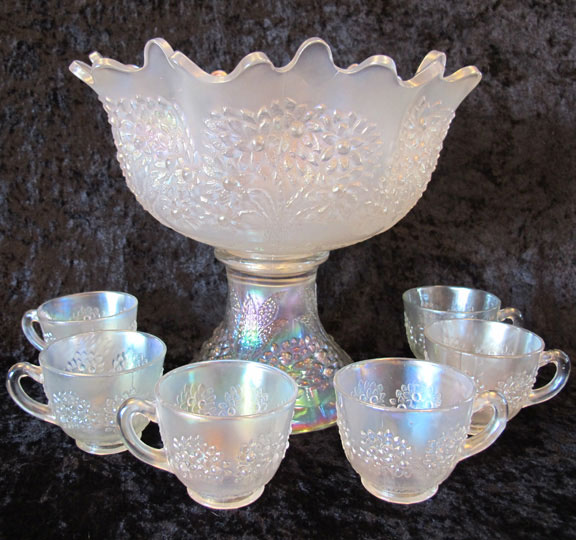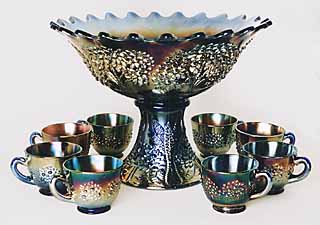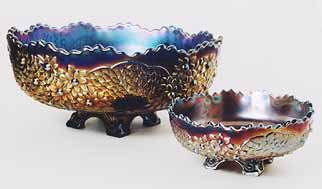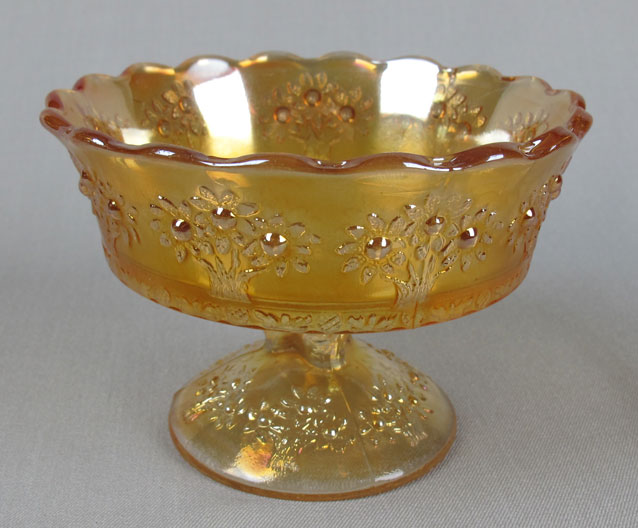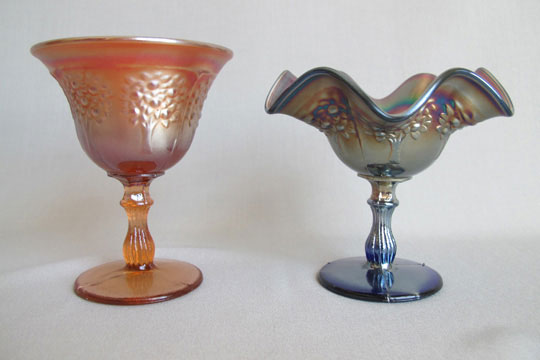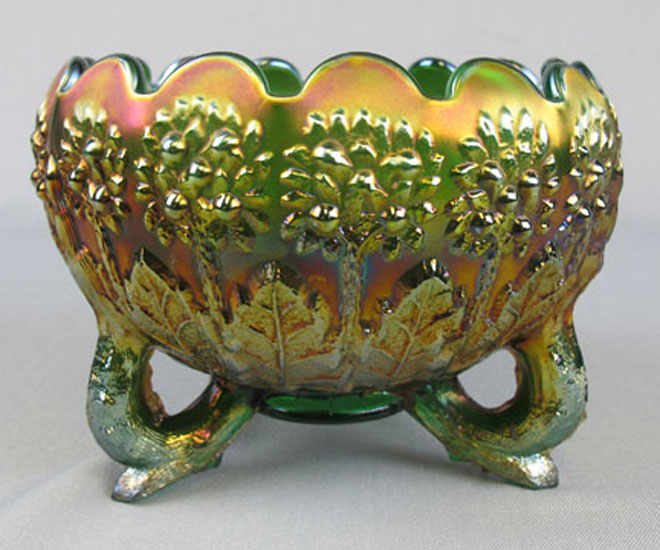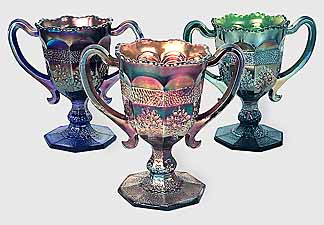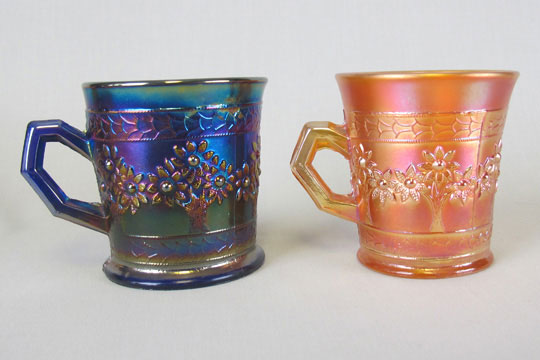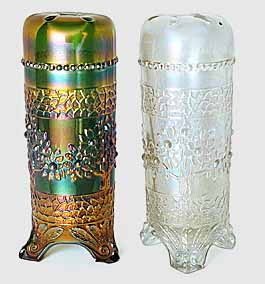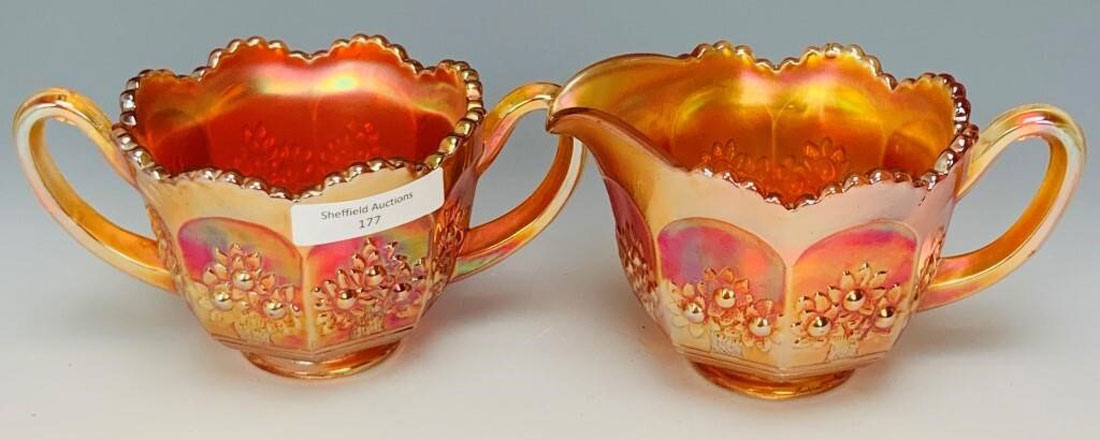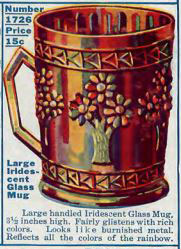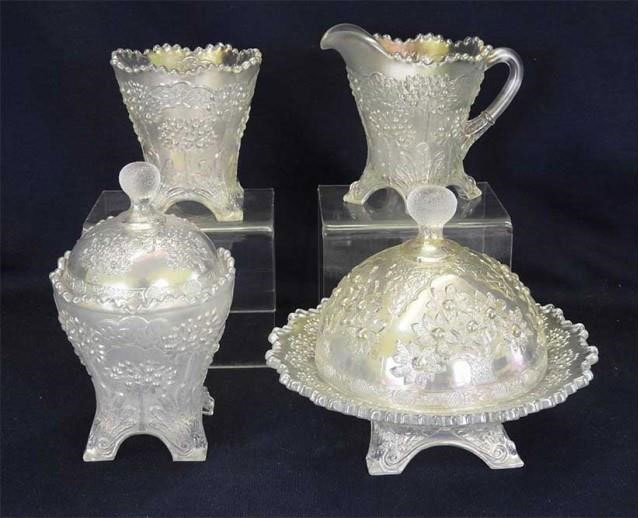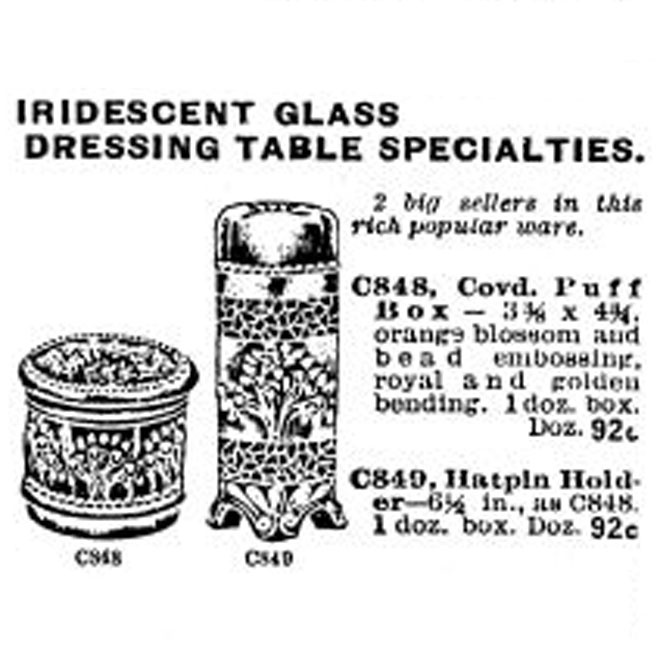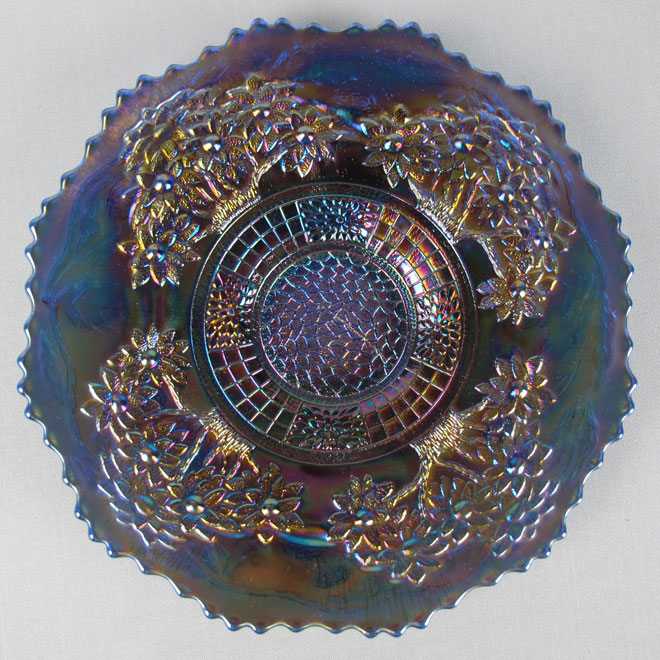


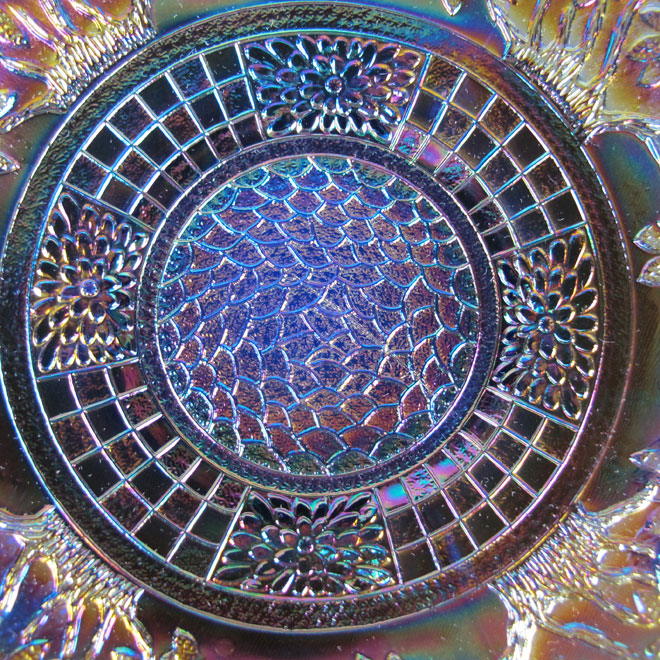
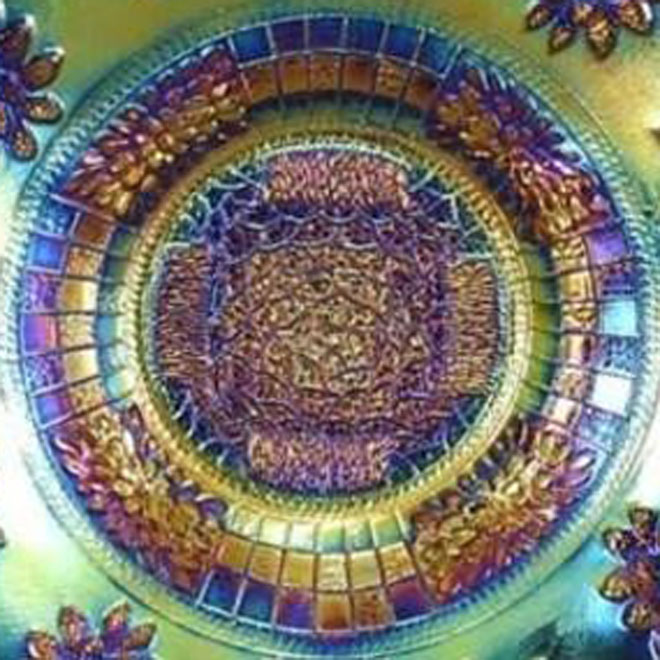
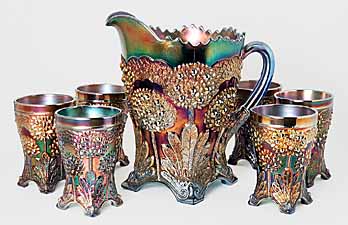
The standard Orange Tree plate and bowl features four orange trees emanating from a ring near the center. Within this ring is a scale pattern design. Some of the plates and bowls have an alternate center in which the trunk of the orange trees seems to skip the interior band and continue slightly into the center. The blue plate above left shows such a "Tree Trunk Center". Standard bowls may be found ice cream shaped, round, 6 or 8 ruffled and in the 3-in-1 shape. The standard Orange Tree plates and bowls have the Breaded Berry exterior pattern.
Plates are found frequently in blue, marigold and white. Amethyst, clambroth and green would be harder to find. Celeste blue, ice green, peach opal and yellow are considered rare. Standard bowls are found in a variety of colors including amethyst, blue, green, marigold, red and white. Found infrequently are amber, aqua opal, celeste blue, ice green, marigold on moonstone, peach opal, powder blue, vaseline and yellow.
Pitchers and tumblers all have four feet, which are highly susceptible to damage. Water sets are found in limited colors of blue and marigold and to a much less extent white. However, on rare occasions, pitchers and tumblers have been found in celeste blue, ice green and ice green opal.
